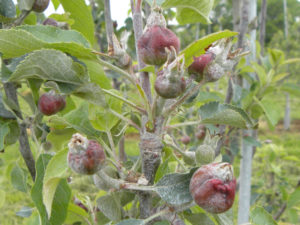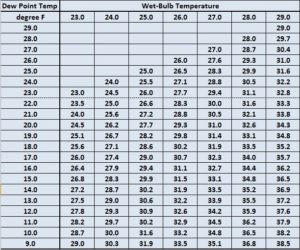Temperature and Herbicide Performance
With air temperatures remaining relatively low this spring, growers have asked about how temperature may affect the efficacy of herbicide applications. The effect of cool temperatures on weed control efficacy will depend on the type of herbicide application, the rate applied, and the physiological status of the target weed.
Summer annual weeds such as lambsquarters or crabgrass require good soil moisture and soil temperatures between 60 and 70F to start the germination process. It is important for preemergence applications to be effective that residual herbicides are applied before soil reaches this optimum temperature range. Of course, herbicides should never be applied on frozen ground. However, cool and wet weather can increase the potential for crop injury with preemergence herbicides because of slower herbicide metabolization by the crop.
Grass and broadleaf weeds are controlled more effectively when plants are actively growing. The ideal air temperature for applying most post-emergence herbicides is between 65°F and 85°F. At lower temperature, weed control will be slower, especially with systemic herbicides such as glyphosate, Poast, Select, or Sandea that are more slowly absorbed and translocated by the weeds compared to applications at higher temperatures. Also, slower herbicide uptake by the weeds will increase the required rainfast period and slows the development of herbicide symptoms on the plants. Weeds that have been damaged (by mechanical equipment for example) or that are under stress (drought, water excess) at the time of herbicide application or before herbicide has properly translocated will not be properly controlled. Reduced herbicide rate treatments are less likely to provide acceptable control under adverse conditions than when plants are actively growing. Thus, it is best to avoid applications of postemergence herbicides during periods of cool temperatures (<40°F at night; <55°F during the day).
High temperatures increase the loss of volatile herbicides. 2,4-D ester or dicamba will rapidly evaporate at temperatures above 80°F, causing. The use of such ester formulations should be restricted to fall, winter, and early spring because sensitive plants are not present and lower temperatures reduce vapor drift hazard.
Adjuvants may also affect crop safety and weed control. Oil additives may increase risk of crop injury but may be necessary for greatest weed control. Refer to each herbicide label for specific information on adjuvant use during stress conditions. Use an oil additive if risk of crop injury is acceptable for those herbicides that allow use.
Ideally, you should be waiting for the right conditions to apply the herbicide. However, if weeds are at growth stage that require a rapid intervention, select a herbicide with excellent efficacy for controlling your target weeds. Remember that the efficacy pf postemergence applications is mainly dictated by weed size… spraying weeds beyond the size range recommended on the label will result in porr weed control.
Rainfast Period
The rainfast period is the minimal period of time that must elapse between herbicide application and subsequent rainfall to ensure good postemergence herbicide performance. Generally, herbicide rainfast ratings are based on good growing conditions (table 1). Poor conditions may require a longer interval between application and any rainfall to ensure adequate herbicide translocation within the weed before the herbicide is washed off. For many herbicides, any amount of rainfall soon after spraying has the potential to reduce absorption, translocation, and subsequent weed control. If you apply herbicide and it rains before it’s rainfast, herbicide performance will be reduced.
Table 1. Rainfast time for postemergence herbicides commonly used in New Jersey Specialty Crops.

*Rainfall will improve control from root uptake.
**Rainfall within 6 hr. after application may reduce effectiveness. Heavy rainfall within 2 hours after application may wash the chemical off foliage and a repeat treatment may be required.


 t webinar series, every Tuesday in May from 7:00-8:00PM to assist farmers with on-farm direct marketing operations to develop strategies for the 2020 season. This 4-part, weekly program will present and discuss the following topics:
t webinar series, every Tuesday in May from 7:00-8:00PM to assist farmers with on-farm direct marketing operations to develop strategies for the 2020 season. This 4-part, weekly program will present and discuss the following topics: ommitted to the agriculture industry and all interested in growing plants, raising livestock and essential resources related to agriculture. The program now features a new
ommitted to the agriculture industry and all interested in growing plants, raising livestock and essential resources related to agriculture. The program now features a new 
